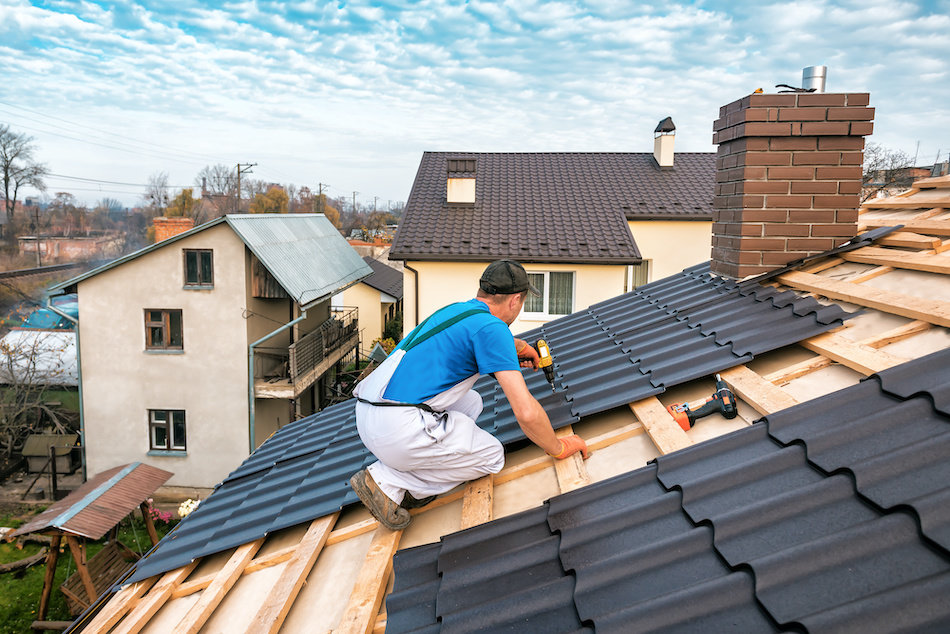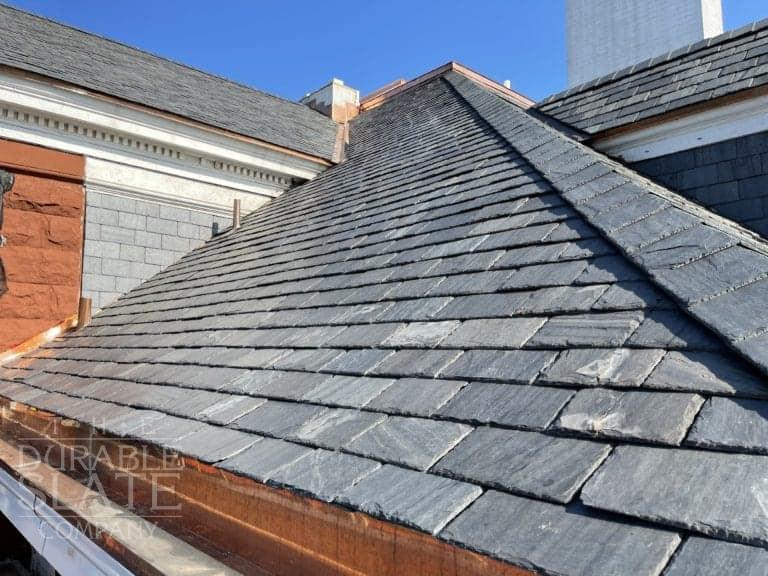Finest Practices for Ensuring Correct Roofing Air Flow
A well balanced intake and exhaust vent proportion, typically 1:300, plays a critical role, with consumption vents preferably positioned at the reduced edge of the roofing for great air entry and exhaust vents at the optimal for cozy air leave. Keeping insulation away from vents is crucial to prevent air flow constraint.
Understand Air Flow Fundamentals
Properly recognizing ventilation basics is crucial for making certain the durability and performance of roof systems. Reliable air flow minimizes dampness buildup and temperature level extremes in the attic room, both of which can cause substantial architectural damages gradually. A well-ventilated roof covering assists in protecting against typical problems such as mold and mildew development, wood rot, and ice dams, which can compromise the integrity of the roofing products and the underlying structures.
The main goal of air flow is to help with the movement of air, enabling a constant exchange in between the indoor and outdoor settings. This balance is accomplished with a combination of consumption and exhaust vents that interact to preserve optimal airflow. Intake vents, normally situated along the eaves or soffits, permit fresh air to get in the attic room space, while exhaust vents, often situated at or near the roofing ridge, allow hot, moist air to escape.
Trick variables affecting the performance of roofing air flow consist of appropriate placement, sufficient sizing, and ensuring that both intake and exhaust vents are unblocked. Normal evaluation and maintenance are crucial to identify potential clogs, damages, or ineffectiveness in the ventilation system, therefore protecting the roofing system's efficiency and sturdiness.
Kinds Of Roof Covering Vents
Roof covering vents play an essential function in maintaining effective attic air flow and, by extension, the overall wellness of the roof. Various sorts of roof covering vents are available, each with distinct benefits tailored to particular roofing needs. Ridge vents, as an example, are mounted along the roof's peak, permitting cozy, humid air to get away from the attic. They provide continual ventilation and blend effortlessly with the roofline, making them both efficient and aesthetically pleasing.

Soffit vents are mounted under the eaves and operate in tandem with roof vents to make certain a balanced consumption and exhaust system. By enabling cooler air to enter from below, soffit vents assist in the expulsion of warm air through top vents. Gable vents, located on the outside wall surfaces of the attic, offer another efficient solution, particularly in homes with saddleback roofs.
Assess Your Present Ventilation

Next, consider the age and condition of your roof materials and air flow components. Older systems may not follow present building codes or might have degraded over time, lowering their effectiveness. Conduct a complete examination to recognize any type of indicators of deterioration, such as corrosion, damage, or gaps that can compromise the system's efficiency.
Furthermore, determine the attic room temperature level and humidity levels. High temperature levels and moisture can indicate insufficient air flow - gainesville fl roofing companies. Utilize a hygrometer and thermostat internet to acquire exact analyses, comparing them with outside problems. Relentless discrepancies recommend possible problems that require attending to.
Setup Best Practices
Effective setup of roofing ventilation systems is extremely important for ensuring ideal efficiency and durability. Appropriate installment begins with comprehending the details air flow requirements of the building and the roof covering it covers. This involves determining the right ratio of intake to tire vents, normally adhering to the 1:300 guideline, which states one square foot of air flow for each 300 square feet of attic floor area.

The positioning of vents is similarly vital. Intake vents ought to be installed at the roof's reduced edge, typically in the soffits, to enable awesome air to enter. Exhaust vents, on the other hand, need to be set up near or at the roof covering's optimal to facilitate the exit of cozy, wet air. This develops a natural air movement that helps preserve temperature level and wetness balance within the attic room.
Seal all air vent links diligently to prevent air leaks and potential water seepage. Usage high-grade products and follow maker guidelines to guarantee durability and effectiveness. Additionally, incorporating ridge vents with baffles can significantly improve air movement effectiveness by avoiding wind-driven rainfall and snow from getting in the attic.
Inevitably, specific installment of roof ventilation systems mitigates potential issues such as mold development, ice dams, and architectural damages, making certain the roof covering's integrity and the structure's overall health.
Routine Upkeep Tips
Consistency in maintenance practices is fundamental to making certain the long-term effectiveness of roof covering ventilation systems. Throughout these inspections, guarantee that vents are free of debris, nests, and other obstructions that can hinder air movement.
Cleaning the vents is one more necessary task. Make use of a soft brush or a vacuum cleaner to eliminate dirt and debris from intake and exhaust vents. Beware not to harm the vent screens or louvers throughout the process. In addition, check the attic room area for any kind of indications of water damage, which could jeopardize the integrity of the roof.
Appropriate insulation is just as vital. Recommended Reading Make certain that attic insulation does not obstruct the vents, as this can severely restrict air movement. If any insulation has actually moved or worked out, rearrange or change it to maintain an effective barrier.
Finally, replace any harmed or missing elements without delay. Broken vents, broken tiles, or shabby blinking can all add to inadequate ventilation and ought to be attended to right away. Normal maintenance makes certain that the roofing air flow system operates ideally, thereby expanding the life expectancy of the roof covering itself.
Conclusion
Making sure appropriate roofing ventilation is paramount for keeping the performance and sturdiness of a roof. Adherence to the 1:300 intake and exhaust vent proportion, paired with the critical positioning of vents, is important. Routine biannual inspections, particles cleansing, and making certain insulation does not obstruct air movement are vital techniques. Executing these best methods will promote a well-ventilated roof, consequently reducing prospective problems related to moisture accumulation and excessive warmth, eventually extending the roof's life-span.
A well balanced intake and exhaust vent ratio, frequently 1:300, plays a pivotal function, with consumption vents preferably put at the reduced side of the roofing for amazing air access and exhaust vents at the optimal for cozy air leave. Consumption vents, usually located along the eaves or soffits, enable fresh air to get in the attic room area, read this while exhaust vents, frequently located at or near the roof ridge, allow warm, humid air to get away.
Soffit vents are installed under the eaves and job in tandem with roofing system vents to guarantee a balanced intake and exhaust system. By allowing cooler air to get in from below, soffit vents facilitate the expulsion of warm air via top vents. Adherence to the 1:300 intake and exhaust air vent ratio, combined with the critical placement of vents, is vital.